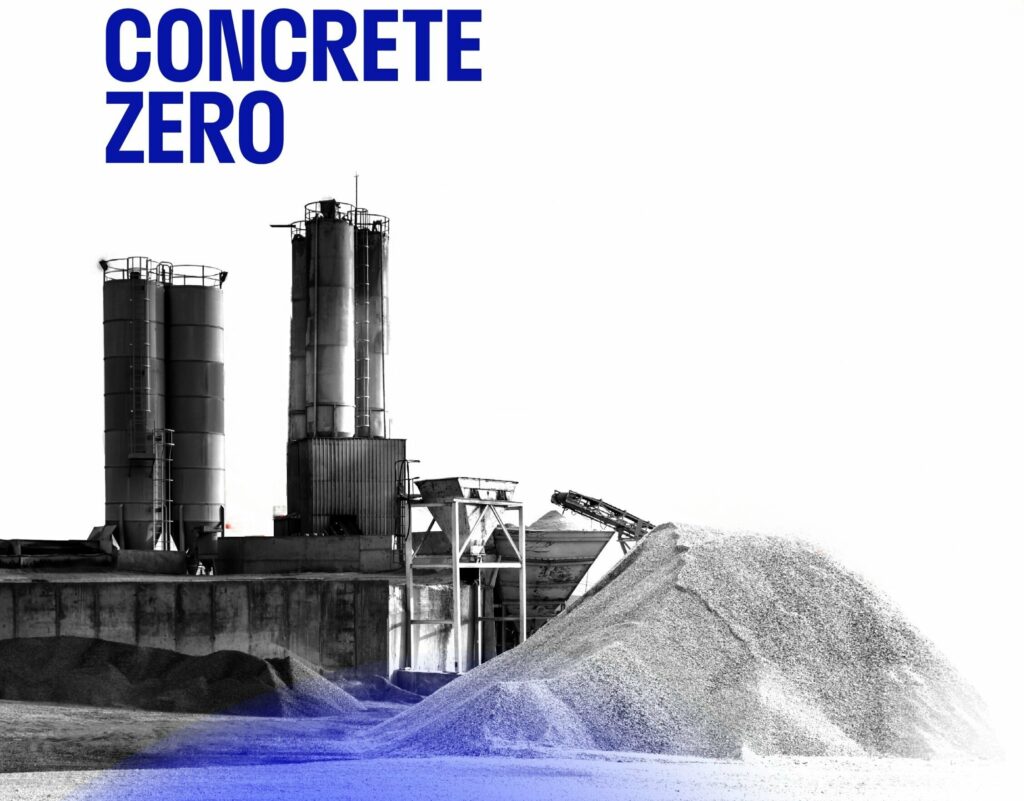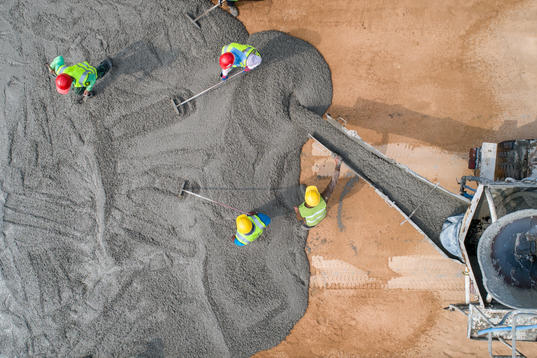To achieve Sustainable Development Goals (SDGs) by 2030, the risks posed by climate change must be analyzed for addressing solutions to achieve net- zero. To avert the worst impacts of climate change, it’s imperative for today that governments, investors and society need to work together to achieve net-zero. Currently, the Earth is already about 1.1°C warmer. The data shows that to avert the worst impacts of climate change and preserve a livable planet, global temperature needs to be limited to within 1.5°C pre-industrial levels..as called for in the Paris Agreement, The emission level need to be reduced by 45% by 2030 and reach net zero by 2050.
What is Net-Zero?
Net zero refers to cutting greenhouse gas emissions to as close to zero as possible. This can be achieved by balancing emissions of carbon dioxide and other greenhouse gasses from various industries. Decarbonization efforts are needed to reach net zero. The Paris Agreement has already underlined the need for net zero. It requires a balance between anthropogenic emissions by sources and removals of greenhouse gases. Transitioning to a net-zero world is one of the greatest challenges. It calls for nothing less than a complete transformation of how we produce, consume, and move about. The concrete sector is a huge source of greenhouse gas emissions today and holds the key to averting the worst effects of climate change.
Concrete is the world’s most-used building material. It is ubiquitous, versatile, affordable, durable, strong and recyclable and is the second-most consumed substance in the world. But concrete is the source of carbon dioxide (CO2) emissions. The production of concrete contributes to 8% of global annual carbon emissions. To meet the needs of a growing, more urbanized, and affluent global population, production is forecast to grow by as much as 38% by 2050 if no intervention is made to use it more efficiently through design, reuse, and recycling.
With the size of a city like Paris being built globally every week for the next 40 years, the demand for concrete is significant. The concrete industry has long recognized it is important to take steps for cutting down co2 emission level; from concrete production now. The Global Cement and Concrete Association (GCCA) published its Climate Ambition Statement, which sets a target of delivering carbon-neutral concrete by 2050.
There is a growing coalition of countries, cities, businesses and other institutions that are pledging to get to net-zero emissions. In regard to this, the International non-profit Climate Group, in partnership with World GBC and WBCSD, has launched Concrete Zero, with a goal of 100% net zero concrete by 2050.

What is the ConcreteZero initiative?
ConcreteZero is a global initiative that brings together pioneering organizations to create a global market for net zero concrete. The initiative has gathered 17 world’s leading cement and concrete manufacturers who have made the public commitment, including ambitious short-term commitments to use 30% low emission concrete by 2025 and 50% by 2030.
By harnessing the members’ collective purchasing power and influence, ConcreteZero sends a strong demand signal to shift global markets, investment and policies towards the sustainable production and sourcing of concrete.
The members that join ConcreteZero commit to using 100% net zero concrete by 2050, with two ambitious interim targets of using 30% low emission concrete by 2025 and 50% by 2030.
The founding ConcreteZero members are signaling to the industry the scale of demand for sustainably produced and sourced concrete. The members are breaking down one of the biggest barriers by committing to measure and report on the concrete-related carbon emissions associated. This data will enable the industry to set a global standard of low emission and net-zero concrete, bringing a clear signal to suppliers and policymakers.
‘It’s time for concrete targets to reduce carbon emissions in years, not decades. ConcreteZero is signaling to the industry that the biggest buyers want it to innovate and act now on emissions. Concrete and steel emit as much as all road transport globally, and demand is going up. We won’t address the climate crisis without big bold measures on industry’, said Jen Carson, Head of Industry of Climate Group.
Luca De Giovanetti, Senior Manager, Built Environment, WBCSD, added: “We need a shared understanding of the importance of the built environment for climate mitigation and a common vision for its urgent decarbonization as a system. That level of transformation will require collaboration within and across all stakeholders of the built environment. The ConcreteZero initiative is a step in the right direction. It changes supply and demand dynamics to incentivize low carbon solutions along the value chain. WBCSD is proud to support the Climate Group in this effort, and we hope more companies will join.”
ConcreteZero founding members;
- Buro Happold – integrated consultancy of engineers, consultants and advisers
- Byrne Bros – UK’s premier concrete frame contractors
- Canary Wharf Group – commercial and residential property developer, owner and manager
- The Carey Group – construction business that operates across the UK and Ireland
- Clancy Group – one of the largest privately-owned construction firms in the UK
- Grimshaw Architects – architects and designers
- Grosvenor – international property developer, manager and investor
- Joseph Homes – multi-award-winning property developer
- Laing O’Rourke – international engineering and construction company
- Mace – global consultancy and construction firm
- Morrisroe – UK’s leading concrete specialists
- Multiplex Construction Europe – premier construction company
- Ramboll – global engineering, architecture and consultancy company
- Skanska UK – one of the world’s leading project development and construction groups
- Thornton Tomasetti – leading global scientific and engineering consulting firm
- Wilmott Dixon- UK’s leading independent construction and property services
- WSP- plan, design and manage long-lasting engineering solutions
Andrew Whalley, Grimshaw Chairman, laid out an ambitious approach to the firm’s environmental strategy in his opening keynote at the World Architecture Festival in Amsterdam. Grimshaw’s international operations and studios will operate on a net zero carbon basis, and all of its design work will be net zero carbon ready within the decade. To accomplish these far-reaching goals, Grimshaw has appointed a Global Practice Leader in Sustainability, Dr. Paul Toyne. Along with these objectives Grimshaw has signed up to the World Green Building Council’s Net Zero Carbon Buildings Commitment challenging businesses, organisations, cities, states and regions to reach net zero operating emissions in their portfolios by 2030, and to advocate for all buildings to be net zero carbon in operation by 2050.

Jonathan Roynon, Technical Director of Buro Happold says, “Concrete is likely to remain a key material in the delivery of buildings, and we need to find ways to drive down its embodied carbon to zero. To achieve this, we must support the supply chain. The ConcreteZero initiative is a great way to consolidate and drive the market demand, providing an incentive to reduce concrete’s embodied carbon with far-reaching benefits.”
“With more than 50 years’ experience of delivering concrete structures, we are acutely aware of the negative environmental impact of our sector. Our extensive trials and use of lower carbon concrete technologies have provided us with expertise to share, and we are proud to be amongst the pioneers in this area, ” Michael Byrne, CEO of Byrne Bros said.
Philippa Spence, Managing Director of Ramboll UK believes this fantastic initiative is a very important and vital step in the decarbonization of our built environment. ‘The impetus to deliver an impact fast, through collective industry effort and baseline concrete carbon reporting will prove essential for our net-zero future,” he further said.
Clancy is committed to Net Zero 2050. They are also preparing a carbon route map to achieve Net Zero by 2030, including working towards a 50% reduction in emissions by 2025. This target is hugely challenging, but they are committed to achieve our key strategic aims: “to build a world where sustainable infrastructure is at the heart of our communities. Given the impacts of materials and products that we use in our industry, it is vital that we communicate to our supply chain that we want to see change and we can do this by sending strong demand signals. The ConcreteZero commitment is just such a signal and is why it is so important for Clancy to be part of this initiative at such an early stage.”, says Ronan Clancy, executive director at Clancy, With the increasing demand for concrete for construction, and the carbon intensity of global cement production growing, emissions from concrete production have been rising in recent years. But options to reduce the carbon intensity of concrete are broadly available, practical, and cost-effective today. ConcreteZero urges to focus on available substitute methods for concrete to pledge to boost the use of renewable energy.
References; netzeroclimate.org, un.org/en/, weforum.org, theclimategroup.org, iea.org



